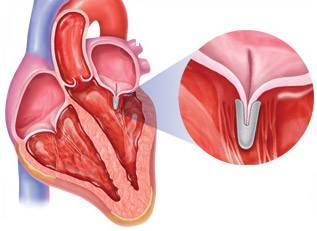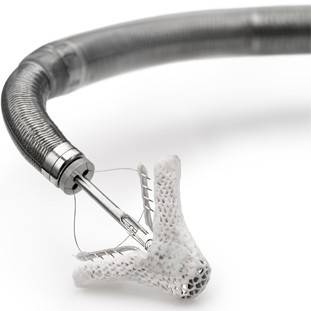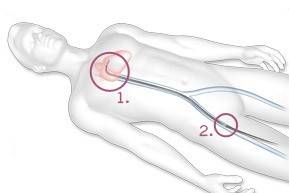What is MitraClip Therapy?
If you meet certain criteria, your physician may recommend MitraClip therapy, which is a less-invasive repair method compared to open-heart surgery. Cardiologists who use this treatment are able to repair your mitral valve# by attaching a “clip” (the MitraClip device) to your valve. The device allows the valves to close more completely, and therefore helps to restore normal blood flow through your heart.
#mitral valve = A valve in the heart that lies between the left atrium and the left ventricle. The valve allows oxygen-rich blood to flow into the left ventricle, and then closes to prevent blood flowing back.
What to Expect with MitraClip Therapy
The MitraClip device is attached directly to your mitral valve#, without opening your chest. To access the mitral valve, a catheter^ (a long, thin, flexible tube) is guided through a vein in your leg to reach your heart. The device is passed through the catheter and is then clipped to the mitral valve, which allows it to close better. The procedure is performed under general anaesthesia, and you will be hospitalized for one to three days following your procedure.
After the procedure, you should avoid demanding activity for at least 30 days. It is also very important to carefully follow your doctor’s instructions regarding any medicines you need to take. Your doctor may also prescribe antiplatelet drugs+ after you have received the treatment. Most patients who undergo MitraClip therapy do not need special assistance at home after the procedure, outside of ongoing needs for any unrelated health conditions.

Image of MitraClip device closed and implanted on mitral valve.

MitraClip device

1.The device is guided through a vein and into your heart.
2.The right femoral vein is the usual entry site
#mitral valve = A valve in the heart that lies between the left atrium and the left ventricle. The valve allows oxygen-rich blood to flow into the left ventricle, and then closes to prevent blood flowing back.
^catheter = A tube used for gaining access to the inside of the body. In MitraClip therapy, a catheter is inserted at the groin to access the mitral valve of the heart.
+antiplatelet drugs = A drug that helps prevent blood from clotting.
Questions and Answers about the MitraClip Therapy
- Has the MitraClip therapy been clinically studied?
The MitraClip therapy has completed a clinical trial in the United States. The goals for safety and efficacy of the MitraClip therapy were achieved. Over 80,000 procedures have been performed worldwide. - What risks are associated with the procedure?
As with any treatment, there are risks associated with the MitraClip therapy. Your doctor will discuss how the risks of MitraClip therapy compare with other options that may be available to you. - Does the MitraClip therapy have the same effect on everyone?
No, the MitraClip therapy may have a different effect depending on - How do I prepare for the procedure?
In the days before your procedure, make sure you take all of your prescribed medicines, and follow all instructions given to you by your doctor or nurse. - Will I be awake for the procedure?
No, you will not be awake during the procedure. You will be under a general anesthesia, and a respirator will be used to make sure your lungs function properly. - How long does the procedure take?
On average, most patients are under general anesthesia for three to four hours. However, the length of your procedure will depend on your particular anatomy. Your doctor will take as long as needed to get a satisfactory result. - How long after the procedure will I begin to feel better?
While this depends on your individual circumstances, some patients feel better in as little as one day after the procedure. - How long after the procedure will I need to stay in the hospital?
Most MitraClip therapy patients are in the hospital for one to three days after the treatment. However, this depends on your condition at the time of the procedure. - Will I need to take medicine after having had the MitraClip therapy?
Your doctor may prescribe an anti-clotting medicine after you have received the MitraClip therapy. Other medicines you may have been taking before the procedure may be continued or modified. It is important to comply with the recommended dose of all medicines. - Will I need any assistance at home after the procedure while I recover?
Most patients who undergo the MitraClip therapy do not need special assistance at home after the procedure, outside of ongoing needs for any unrelated health conditions. - Once I receive the MitraClip device, will I be able to “feel” its presence in my heart?
The MitraClip device is very small–less than the size of a typical fingertip. You will not be able to feel its presence.
Talk to your physician about your options
Treating your mitral regurgitation* is important. Regardless of your choice of treatment, it is important to consult your physician regarding all possible treatment options for mitral regurgitation.
*Mitral regurgitation = A disorder of the heart in which the mitral valve does not close properly when the heart pumps blood, and blood flows backwards.
























